- A Just Transition is the idea that the shift toward low-carbon economies needs to be fair and inclusive, meaning it considers the people that will be most impacted by abandoning fossil fuels.
- Among the groups most likely to be affected by the green energy transition are Indigenous communities, many of whom may be disproportionately dependent on fossil fuels for their day-to-day energy needs and livelihoods, and at the same time are also most likely to bear the brunt of the impacts of climate change.
- Recognizing the need for a Just Transition for Indigenous Peoples, Melina Miyowapan Laboucan-Massimo of the Lubicon Cree First Nation in northern Alberta founded Sacred Earth Solar in 2015 to empower Indigenous communities across Canada to adopt renewable energy.
- Laboucan-Massimo spoke about catalyzing a just energy transition for Indigenous peoples, the legacy of colonization, and more, during a March 2021 conversation with Mongabay founder Rhett Ayers Butler.
In the past decade, the term “Just Transition” has gained more widespread understanding among climate campaigners and environmental advocates. A Just Transition is the idea that the shift toward low-carbon economies needs to be fair and inclusive, meaning it considers the people who will be most impacted by abandoning fossil fuels.
Among the groups most likely to be affected by the green energy transition are Indigenous communities, especially those living in remote areas where they’ve often been pushed by governments. Indigenous communities may be disproportionately dependent on fossil fuels for their day-to-day energy needs and livelihoods, particularly in places where government policies and incentives mean that extractive industries account for a large share of local jobs. Curbing oil and gas drilling, mining, and other heavy industries would thus cause significant social and economic disruptions in places that currently have few other opportunities and are already struggling with the impacts of colonization, including systemic discrimination, unfulfilled treaty obligations, and legacy traumas stemming from violence, oppression, and stolen land.

Paradoxically, it is Indigenous communities that are also most likely to bear the brunt of the impacts of climate change. Rapid warming in places like Alaska and northern Canada are already triggering dramatic changes for ecosystems, with immediate consequences for Indigenous communities, including Native traditions and cultures, food security, and the very existence of their villages and settlements due to rising seas and melting permafrost.
But the green energy transition could be an opportunity for Indigenous communities, creating new livelihoods, reducing localized pollution, and freeing up income that would otherwise go toward propane and diesel. It could also help maintain the very ecosystems and climate that have sustained them since time immemorial.
Recognizing this potential as well as a need for a Just Transition for Indigenous Peoples, Melina Miyowapan Laboucan-Massimo of the Lubicon Cree First Nation in northern Alberta founded Sacred Earth Solar in 2015 to empower Indigenous communities across Canada to adopt renewable energy.
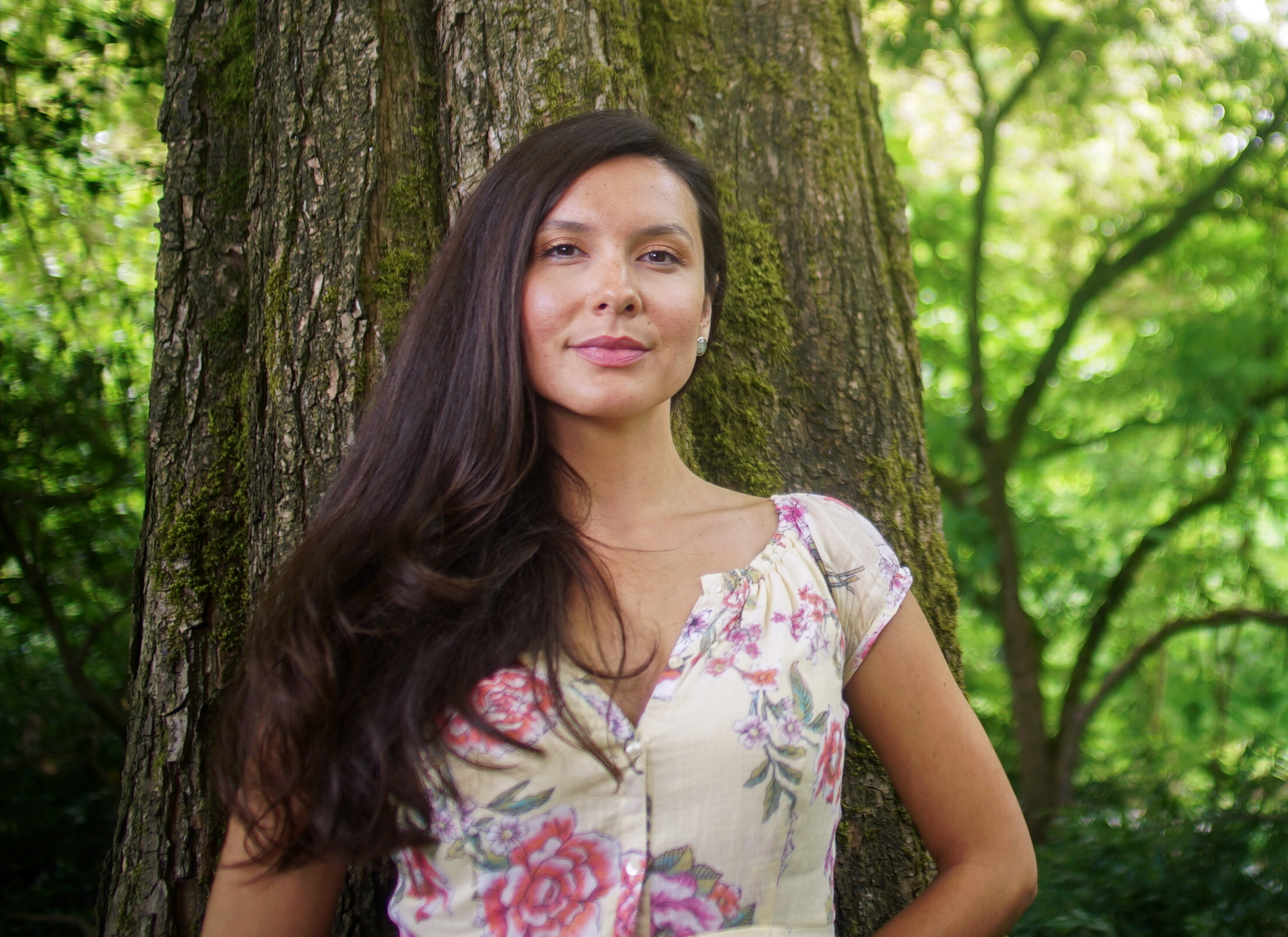
Laboucan-Massimo told Mongabay that Sacred Earth Solar was born out of her desire “to push for an end to extractivism in our traditional territories.” She had been advocating on these issues since a very early age, but it was a pipeline rupture that spilled more than 3 million liters (800,000 gallons) of oil near her family home in the village of Little Buffalo in 2011 that moved her to focus on bringing solutions to Indigenous communities.
“I realized, ‘Wow, I need to really start building: What does transition technology look like? What does a just transition look like in our communities?’”
Sacred Earth Solar’s first project was a 20.8-kilowatt system powering the health center in Little Buffalo.
But Laboucan-Massimo’s work isn’t limited to Sacred Earth Solar. She is the Just Transition director at Indigenous Climate Action, an Indigenous-led organization that advocates for Indigenous communities and Indigenous-led solutions; a renewable energy fellow at the David Suzuki Foundation; and the host of the Power to the People TV series that profiles sustainability initiatives among Indigenous communities in Canada. Laboucan-Massimo also continues to advocate for social justice, including speaking out on violence against Indigenous women, and serves on the boards of Seeding Sovereignty and NDN Collective and the executive steering committee of the Indigenous Clean Energy Social Enterprise.

Laboucan-Massimo says the obstacles Indigenous communities face in trying to secure a Just Transition are myriad and substantial.
“Indigenous communities are on the receiving end of massive extraction zones and a lot of environmental degradation,” she said. “We’re also on the receiving end of cultural and environmental genocide, where it’s really impacting people on a very fundamental level.
“Indigenous communities are operating in crisis situations in many arenas. Not only are we experiencing the brunt of colonization — there’s a lot of undoing of really detrimental government and colonial policies that were tearing apart the social fabric of communities and governance structures, and we are rebuilding all of these —but we’re also fighting being forcibly pushed from land and encroachment by very toxic developments in and around our communities.”
Laboucan-Massimo spoke about these issues and more during a March 2021 conversation with Mongabay founder Rhett Ayers Butler.
This interview has been edited for clarity and length. The original version can be found in the embedded video.

An interview with Melina Laboucan-Massimo
Mongabay: Where are you from and where do you live?
Melina Laboucan-Massimo: Tansi kwakiya — My name is Melina Miyowapan Laboucan-Massimo. Niya Nehiyaw. Kinaskomtinow.
I am Lubicon Cree from northern Alberta. I was born in a small Indigenous community that is called Little Buffalo and it’s in the territory of my Nation, which is the Lubicon Cree. And that is pretty far north of the Medicine Line, as we call it, in so-called Canada. If you’ve been to Calgary, it’s about eight hours north of there. So, it’s quite a long distance: it’s in the northern part of a place called Alberta, which is sometimes called a “Little Texas.”
You’re engaged in an impressive number of initiatives between founding Sacred Earth Solar, hosting a TV series, being a fellow at the David Suzuki Foundation, co-founder of Indigenous Climate Action, and more. What are you working on across these roles and activities?
I founded Sacred Earth Solar in 2015. I was very concerned as an Indigenous climate campaigner working on fossil fuel extraction and trying to push for an end to extractivism in our traditional territories, because of the immense impacts we were feeling from water contamination, air pollution, massive deforestation of the boreal forest — which is the northern lungs of Mother Earth — and the major health issues in our communities and our peoples across the north. Because the tar sands, which is what I campaigned on for a decade-plus, is one of the biggest industrial extraction zones on the planet, so we feed into the addiction of Canadian and U.S. oil.

It’s a major, major impact zone and that’s where I was born. My first protest was when I was 7, when there was a big road being built into our territory. This is work that I’ve inherited.
When we had a major oil spill back home, I realized, “Wow, I need to really start building: What does transition technology look like? What does a just transition look like in our communities?” That’s why I founded Sacred Earth Solar, which began with my master’s thesis, on implementing the 20.8-kilowatt system which powers the health center in the community of Little Buffalo where I was born.
Since then, I have also done research with the David Suzuki Foundation, on Indigenous knowledge, climate change, and renewable energy.
I also just finished filming a TV show, and it’s now airing here in so-called Canada. It’s called Power to the People, and it’s about renewable energy, eco-housing and food security across Turtle Island in Indigenous communities.
And then, also, as I said in the beginning, I am a co-founder of Indigenous Climate Action, where I currently serve as the Just Transition director. With the experience from all of these projects that I just named, I’m working on a Just Transition Guide, which talks communities through how to implement renewable energy projects: the pros and cons of renewable energy, and how communities can get off diesel and use this as a transition technology. When I first applied for my master’s in 2012, I was like, “There’s not a lot of guides out there to show communities how to transition.” My current work is the culmination of many years of research.
What is the significance of a just energy transition for Indigenous communities?
Indigenous communities are on the receiving end of massive extraction zones and a lot of environmental degradation. We’re living the consequences of what is a lot of the time unseen by other communities, urban centers and people that don’t live near extraction sites. We receive the impact and the burden of toxicity and sometimes unclean air and unclean water. We’re also on the receiving end of cultural and environmental genocide, where it’s really impacting people on a very fundamental level.

We have the impacts of extraction and the impacts of climate change, but a lot of times we are not receiving the benefits of a just transition, or utilizing transition technologies to allow our communities to get off of fossil fuels, propane, and diesel. These are expensive fuels that are very toxic for people’s inhalation and linked to dementia. There’s a lot of impact that communities are burdening for oil and gas addiction. A just transition looks at transitioning communities as well; not just receiving the impacts, but also receiving some of the benefits of trying to transition and move our communities away from dependency on fossil fuel extraction.
What has been the biggest obstacle for Indigenous communities to transition and get access to clean energy?
Indigenous communities are operating in crisis situations in many arenas. Not only are we experiencing the brunt of colonization — there’s a lot of undoing of really detrimental government and colonial policies that were tearing apart the social fabric of communities and governance structures, and we are rebuilding all of these —but we’re also fighting being forcibly pushed from land and encroachment by very toxic developments in and around our communities. We’re dealing with a slew of crisis situations on top of poverty and high rates of suicide, because of colonial policies that have detrimentally affected our communities. Because of the impacts of the trauma of colonization.
We’re battling things on multiple layers.

When you try to add in a just transition on top of dealing with a community in crisis, it can be very challenging to implement climate solutions. Communities may think: “We’ll just keep this diesel or propane and pay exorbitant amounts of money to keep the lights on, because we’re dealing with so many other things, like youth suicide rates, foreign governments trying encroach on more land — basically more land theft.” There are a lot of issues that communities are dealing with. Sometimes you don’t necessarily see people coming from communities wanting to implement climate solutions, because we are already dealing with so much. That’s one major issue.
This is why I decided to do my master’s degree in renewable energy and Indigenous governance. I wanted to figure out, “How can I actually implement this? How can I teach myself? How can I teach my community? How can I learn to do this implementation?” No one else is going to do it for us, because a lot of the times, we don’t have external governments coming in and saying, “Let me do a really great project for you.” And many times when that has happened, the projects have actually been detrimental, not beneficial, for communities. People from communities know what the problems are, and therefore, communities know what the solutions are.
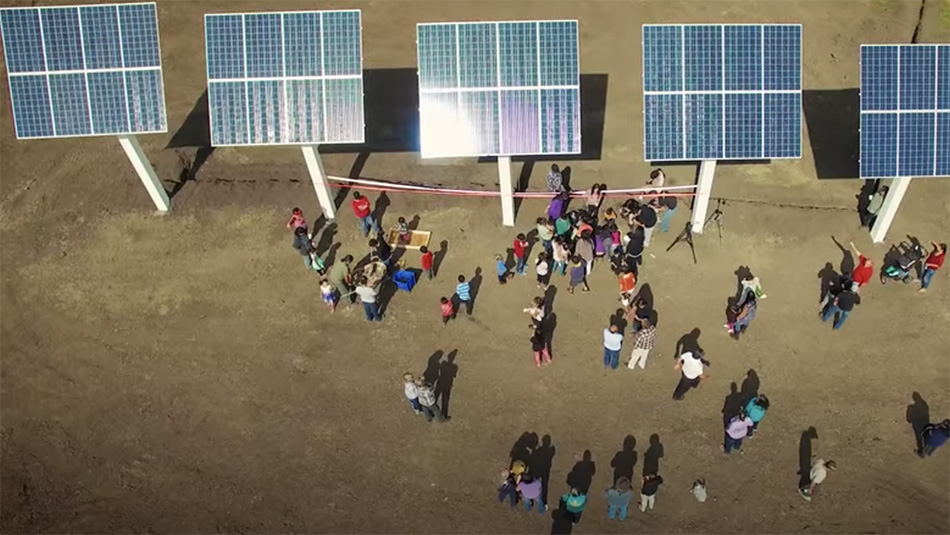
That’s why it’s been a slow transition, but as more resources, funding, knowledge, and Indigenous experts have come out of the woodwork, and the renewable energy sector grows, the situation is changing. We’re all building up at the same time so that we can abate climate change, ideally. What we see north of the Medicine Line in Canada is that Indigenous communities are now leading the way. We have up to 2,500 different renewable energy projects across the country, of which up to 200 are medium- to large-scale revenue-generating projects like major wind farms or solar farms which communities are either owning outright or have ownership stakes in. And 2,300 small- to medium-scale projects where, for example, communities like mine have implemented solar to run one or multiple buildings or housing. It’s happening, but there are definitely challenges.
You’ve been operating in this space for about 20 years. What would you say the biggest difference is between when you got your start and now?
I think there is now more recognition of Indigenous rights and title. In North American collective minds, the history books have no Indigenous history or the actual history of America or Canada. There’s Indigenous invisibility. Because Indigenous people were pushed out into small reserve areas and had to have land passes to leave, there was not a lot of interaction between Indigenous and non-Indigenous settler communities. And there’s the history of residential schools that’s been hidden from American and Canadian textbooks. In America, and in Canada, to a lesser extent, there is more of a discussion that is happening now. We have certain policies and documents and commissioned reports like the Truth and Reconciliation Commission that happened here in Canada, and the National Inquiry on Missing and Murdered Indigenous Women and Girls that just wrapped up last year.

As I grew up, from a young age, I felt very invisible as an Indigenous person, especially when we moved to the city. Most of the time, I was the only Indigenous person in the classroom, in university settings, in high school. The history wasn’t taught, even around settler colonial and Indigenous relations, which is the very foundation of Canada. People do not know their own history: if they’re Treaty beneficiaries, or whatever kind of agreements, or lack thereof, or unceded or stolen land.
That was the basis of what I was coming into in my early 20s and I was having to do a lot of awareness raising around Indigenous issues in any space I went into. That added a lot of emotional labor and toll.
Fast forward to 20 years later, people do now understand that they’re a part of this relearning of Indigenous/American/Canadian history. That this past is a part of the foundation of these countries. Every single person that lives in Indigenous territories — which is North America — needs to understand the history that they are building their lives upon. I think that’s one big change that is now coming into people’s consciousness.
About a decade-plus ago, when I would be going to a conference or going to speak in front of an investors’ group, or doing toxic tours in the tar sands, or sitting next to someone on the airplane, someone would ask, “What do you do? What do you work on?” And I’d be like, “Well, I’m a climate and energy campaigner.” And they would say, “Climate change? Oh, that’s interesting. That’s nice.” I felt like I was kind of speaking out to this void.

There were a handful of us that had dedicated our lives to bringing climate change awareness and ringing the alarm bell that scientists, Indigenous Elders and people through our prophecies and our deep connection to the land, were saying: “This is going to be a problem and we need to address it.”
We had a little bit of that in the ’80s and ’90s, but then it wasn’t a part of the national dialogues that we’re having now. That feels really different. Today, most people don’t dispute climate change. A decade ago, many people either didn’t care, or they disputed it.
Historically there have been tensions when the conservation sector has not respected — or even undermined — Indigenous peoples’ rights and traditional practices when establishing protected areas. Is this an issue you’re involved with?
Yeah. As somebody that’s worked in environmental and climate justice campaigns to get a certain outcome in the work that we’re doing, to either raise awareness or get governments or banks or institutions to divest, it’s definitely something that you come across. Especially since the history of the environmental movement is not one that I would say took into consideration Indigenous rights and titles in the past. In the 1970s and the 1980s, Indigenous peoples were many times left out of any of the campaigns or any of the strategies or any of the policies that literally affected Indigenous peoples on their homelands. That is definitely a part of the history of the conservation movement as well.
That’s why there is criticism of the conservation movement as well as the environmental movement. I think these movements are even more responsive now to those criticisms and will say, “From the get-go we have to include Indigenous people as more than just stakeholders. We have to ensure that they are helping us write the policy, helping us write the strategies, helping us implement these things.” Not just as an afterthought, not, “We’re going to devise all of these strategies and plans, and then get Indigenous ‘consent’ after the fact.” That’s not a respectful way of knowing that Indigenous people actually understand the problems and understand the solutions. We understand how to implement and what is necessary on the land.
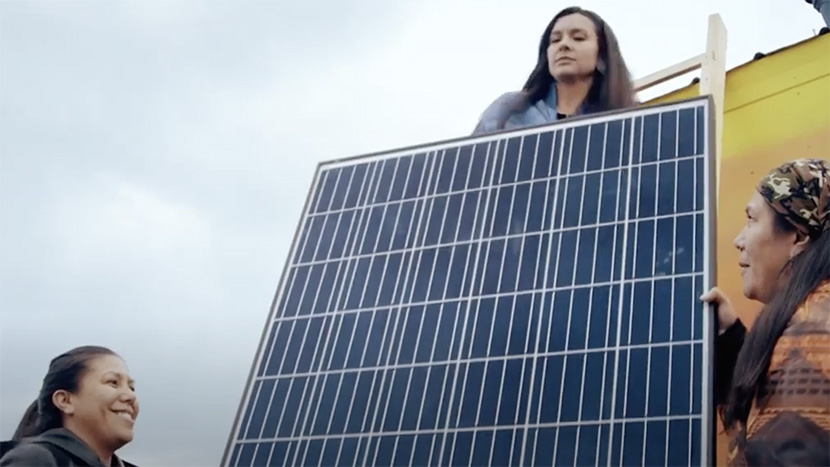
When you have outsiders in the conservation movement and the environmental movement bringing strategies and implementing these policies without including Indigenous peoples’ input from the beginning, they get lackluster results or do not succeed in the way that they need to. That is definitely an issue that I’ve come across for many years and continue to deal with sometimes. But I feel like people have heard that and are starting to understand that they need to stop doing that type of behavior, which is definitely a colonial behavior and a patronizing behavior. There needs to be deeper levels of respect and understanding of how we work together.
What would you say is a way to address this?
It is really understanding. There needs to be work on the part of conservationists, white settler conservationists, or white settler environmentalists, who have really good intentions of wanting to work with communities or wanting to make change in the world, but not necessarily understanding their location of where they are coming into this work. We are existing under a white colonial and white body supremacist society which definitely prioritizes the voices of people that are not marginalized.
When you’re starting to work with communities that have been traditionally oppressed, I think it’s important to understand your location. It’s important to understand the history of the society that you’re living in. It’s really about people doing their homework, and truly understanding where they live and what history took place. That helps inform people: What history actually took place in the land you currently live on?
What land do you live on right now?
Ohlone land.
So, you’re based in California?
Yeah. Redwood City, it’s near San Francisco.

There are a lot of people that work on environment or conservation who don’t even know the history of the land where they’re making their living. The land where they work, play, love, and all of these things. They’re unaware of the history and the genocide, or the forced removal, or the biological warfare. If you can ground yourself in the land where you actually live and work and make your life, that will help inform you to understand the microcosm of the macrocosm of how North America was colonized.
I think that’s a basic foundational premise to help your heart and body understand what’s happened across North America and how these ways of being continue to be perpetuated in our workspaces even now.
I think an easy solution that someone can feel empowered by is reading a book, or watching a documentary, or speaking to a local Indigenous Elder — if they have time to speak to you — but also realizing that that’s your homework and that’s your work to do. You can’t put it on somebody else and expect someone to educate you. You have to do that work as somebody that has these roots in the country that you live in.
I want to pick up on a point made earlier, which was about violence. This past year has been notable for rising violence against environmental defenders, including Indigenous peoples in many countries. And I know you’ve done work on this issue, so I’d be interested in your take on what sort of actions can be taken to improve the situation.
That’s a really heavy one, because there are Indigenous land defenders across the world. In South America, where there’s a really high rate of murder for Indigenous land defenders, it feels sometimes hard to know how to stand in solidarity with people that are so far away, even though we feel the heartbreak of people’s very lives being taken just because they’re speaking out for the protection of the land, the climate, and the benefit for all of us. Some of the things that I’ve done in the past are solidarity actions; figuring out what is supportive of those communities that are experiencing that crisis, so, if it’s down South, doing solidarity actions to raise awareness in North America, or being a part of documentaries, or writing articles that can document these cases.
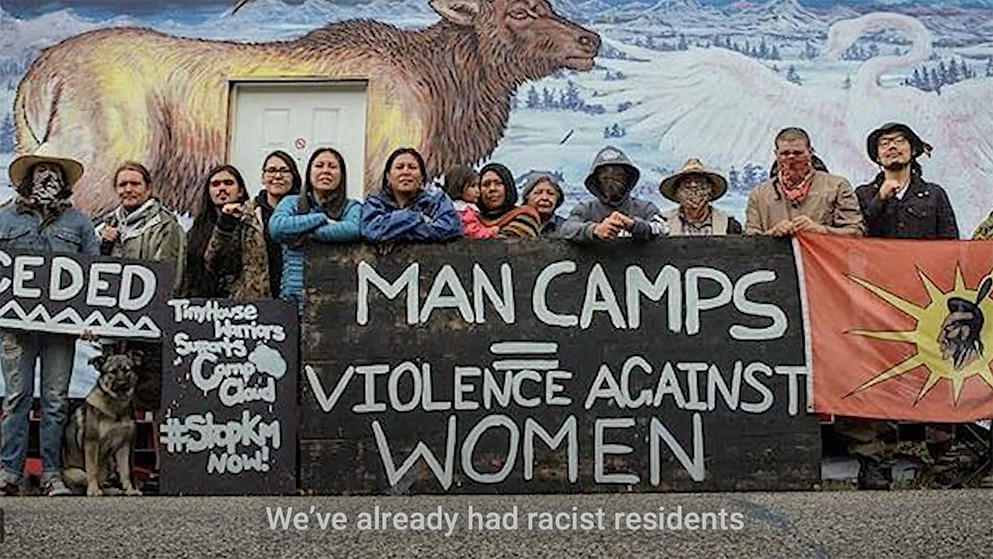
Also, looking at what the audiences and the choke points are that can help put pressure on those local or national governments to let them know that people are watching. I think when you get international pressure, that can help alleviate some of the local pressure. It doesn’t take it all away, but it helps. I think that’s one of the benefits of social media: nowadays we don’t have to depend on traditional mainstream sources of media. We can share and reshare, sign petitions, and send letters to local governments and to our governments.
I’ll give a specific example: one of the issues when I was down in Ecuador was that there were Indigenous peoples that sued the Ecuadoran government and won, and then sued Chevron, formerly Texaco, and won. They won, but were not able to hold those corporations accountable in those countries, because the corporations left the country. The Indigenous people then brought a legal case in Canada, because Chevron has assets here in the country. We then did a cross awareness raising around that via actions at Chevron refineries and different sites in North America that put pressure on Chevron. That’s been a big battle that I know a lot of people are more aware of, but it’s really challenging to figure out how to support communities.

I think it’s really about taking note from the communities of how they want support: what they think is strategic and effective and following the direction of those communities is number one. And then telling friends, families, governments, posting, reposting, resharing. The more that people have eyes on it, the better, I think, and the safer people ultimately are. It’s a very challenging one, because obviously we’re not physically there with our brothers and sisters that are getting murdered when it’s actually happening. Raising awareness is a huge one.
The pandemic has been especially difficult for many Indigenous communities around the world. How has COVID affected you, your community, and your work?
Well, it has definitely forced the organizations that I work with, at Indigenous Climate Action and Sacred Earth Solar, to work with all of our staff online. I think that’s par for the course for most people during COVID: not being able to work directly with communities other than through an online platform and online ways of webinars, Zoom, and all of the things that I think we’re all becoming very familiar with.
In terms of COVID impacts, it’s a scary thing for remote Indigenous communities, because once the virus is in the communities it can become an outbreak, which has very detrimental impacts on Elders and people that are of higher ages.
Our Elders are seen as a vital source of knowledge and history and oral tradition and language and culture. When an Elder dies, for us, it’s a huge loss for the community, for the family, for the Nation. That’s a major issue with the pandemic and why Indigenous peoples, in my opinion, have taken it so seriously.
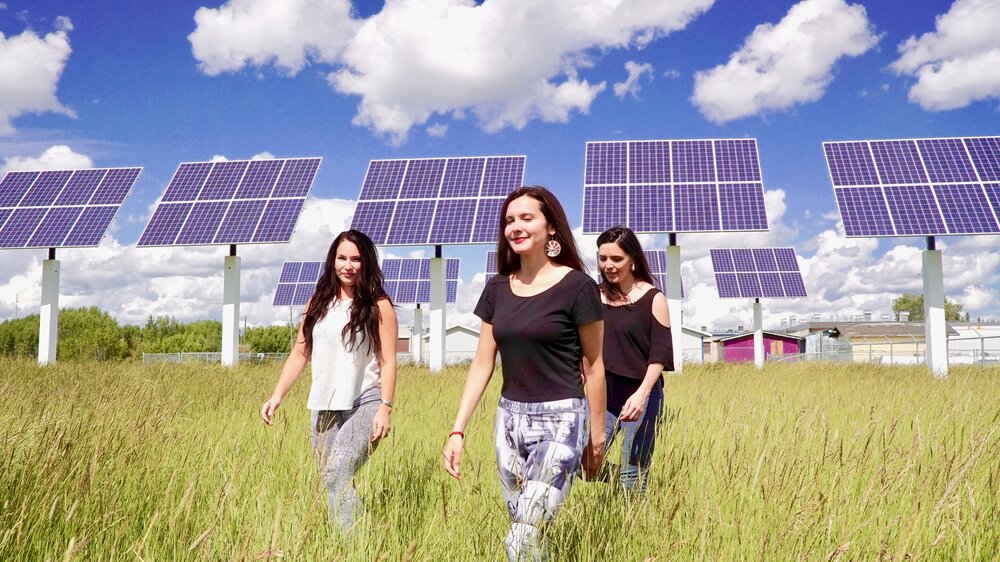
I can speak specifically to my family. We’ve had pandemics already within our life: where the pandemics and the biological warfare that’s been waged against Indigenous peoples here in North America has reduced our population by 95% already. That trauma is very much in our minds and in our bodies. It’s very real and present.
This is reflected in the ways in which I act toward the virus: I’ve seen family members die in front of my eyes from communicable diseases like tuberculosis. It’s a very real thing, whereas, I think some people in our society, in Canadian and North American society, don’t take it as seriously, because they don’t really know what it’s like to experience a pandemic in their recent memory: the last one we can think of was in 1918. But our people have very recent stories of the detrimental impact of pandemics.
I’d say it affects us a little differently and I think our response is a bit different. When it gets out of control and the outbreaks happen, like it did in Navajo country, because they have such a large population, the impacts are utterly heartbreaking. I have a close friend that has lost 15 family members. It’s a very real thing. I have family members back home on my reserve that have gotten very sick. Thank God, knock on wood, we haven’t lost any Elders, but it’s definitely kept me up at night thinking about my aunties and uncles and how much it would be crushing if that were to be the case.
What advice would you give to someone who wants to be an ally in supporting Indigenous people’s rights and general welfare?
The one step that I already covered was really learning the history and grounding yourself in the land where you are, where you make your life and living, and in your home. Knowing that history. There are so many books, studies, and resources out there. If people look for it, they’ll find it. There are a lot of amazing books written by Indigenous scholars.
If they can, going through anti-oppression workshops and anti-oppression training.

And understanding a little bit more deeply the work I think we all need to do on our identity, of who we are and our location in the world and how we bring that into our communities and our families.
I think that’s really important, because I know there are a lot of people that want to do a lot of good and that’s a really amazing, altruistic need. We need that and people like that in the world, but we also need people to understand deeply the impacts of colonization and also their location within that: how they’ve benefited from white body supremacy and how they’ve benefited from land theft. Having that framework helps you become a better ally when you locate yourself within the struggle.
Some of the materials used in renewable energy are sourced from areas where there is conflict with Indigenous Peoples and local communities. Is this an issue you’re engaging on?
I think it’s important that we talk about how there’s impact. When we promote just transition technologies, it’s just that. We see it as a transition technology, because ultimately there’s impact when we take from the land, if we’re taking too much. We can’t say renewable energy is the end all, be all. We can’t say that it’s the silver bullet, like people say carbon capture storage is the silver bullet. These technologies can actually also be harmful. Mega dams are harmful.

Having a critical analysis of solar and wind is important. I’m not saying to throw the baby out with the bath water, because I think that can also be really harmful, but understanding that these technologies, that really should have been implemented in the ’80s and ’90s, that existed, that we are finally implementing now, are just what they’re called — transition technologies — to get us hopefully off of fossil fuel extraction. With the mining and lithium batteries, I think we need to look more into where the rare earth metals are coming from and need to understand that deeper.
We need to continue to analyze the impact regardless of what the technology is, and be honest with it, because I think what we’ve seen in mainstream media, unfortunately, is a glossing over of the impact.
We need to talk about the impact on the land. We also need to figure out how we can recycle, because there’s so much upcycling or recycling that we could do, but we haven’t learned how to do that with a lot of the old dinosaur technology and fossil fuel technology that we’re now decommissioning. How can we use all of those heavy metals and rare earth metals and all the things that we’ve already taken from the land? How can we recycle them and put them into clean tech? I think that’s not necessarily being done, and that’s something that I would hope to see in the future to reduce the amount of mining that’s happening.
Learn more about Sacred Earth Solar here.